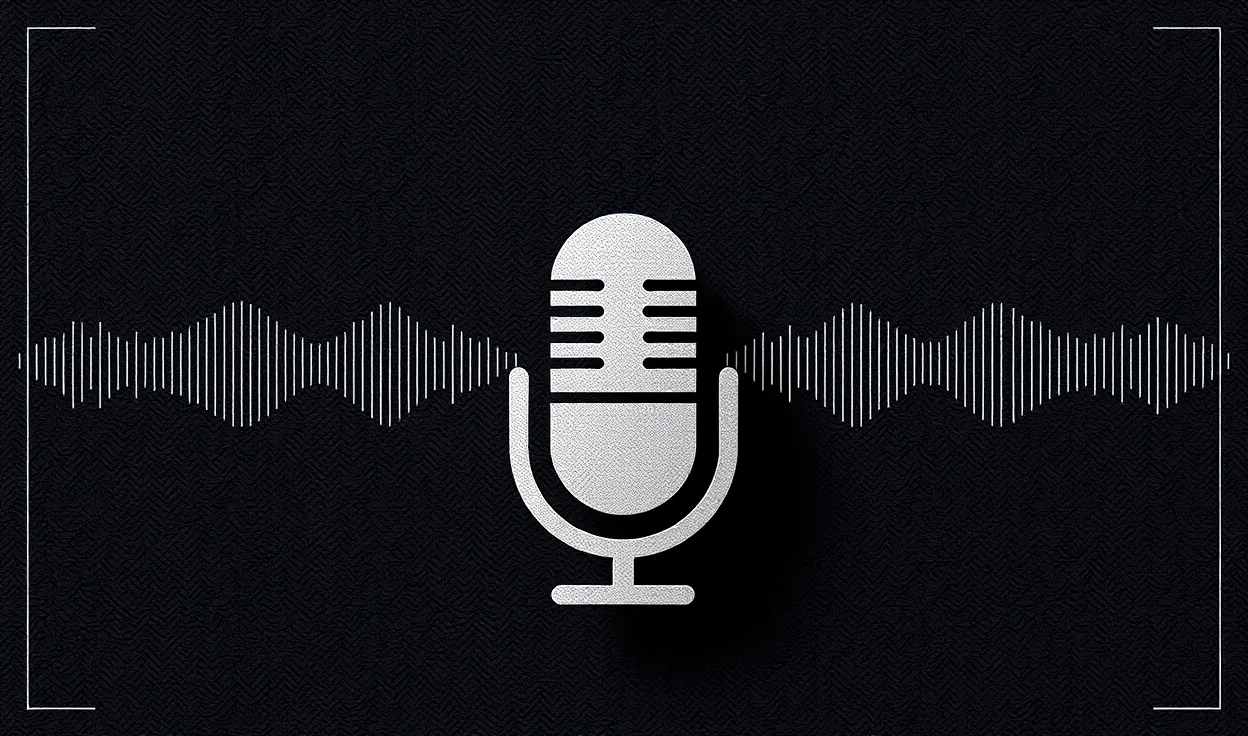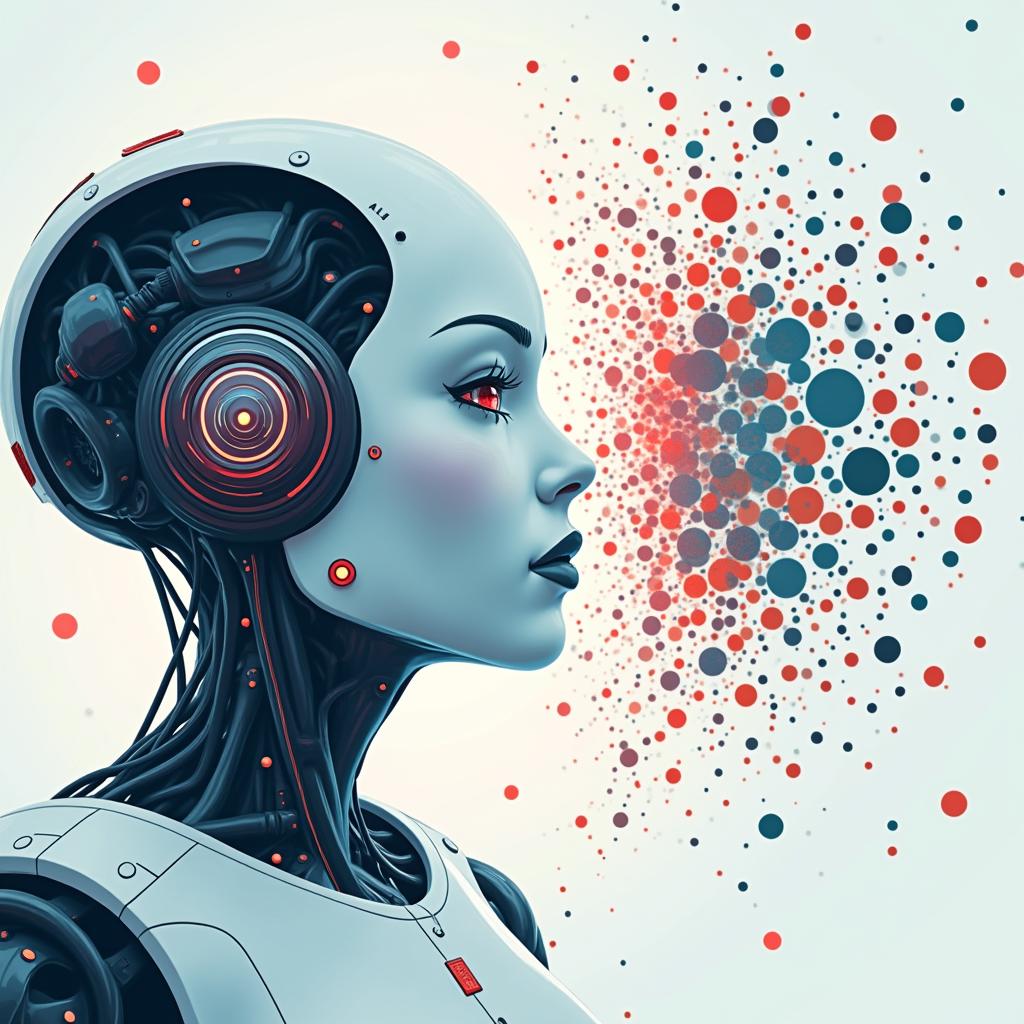
Understanding AI Voice Generators
What Are AI Voice Generators?
AI voice generators use artificial intelligence to produce human-like speech from text or other inputs. These tools leverage advanced natural language processing (NLP) and machine learning algorithms to replicate various tones, accents, and emotions.
They’re not just about convenience; they’re transformative for those who rely on voice-assisted technology due to physical or cognitive disabilities.
How They Differ From Traditional Tools
Unlike older text-to-speech systems with robotic-sounding outputs, AI voice generators can mimic authentic speech patterns and even individual voices. This evolution enables smoother, more natural interactions.
For instance, someone with ALS (amyotrophic lateral sclerosis) could preserve their unique voice through personalized AI voice cloning, maintaining a sense of identity when using assistive devices.
Revolutionizing Accessibility for the Disabled
Enhancing Communication for Non-Verbal Individuals
AI voice generators empower individuals with conditions like cerebral palsy, autism, or speech impairments to communicate effectively. By typing or selecting symbols, they can generate clear, expressive speech.
- Example: Tools like Tobii Dynavox allow non-verbal users to select words or phrases via eye-tracking, translating them into human-like speech.
- Impact: These tools foster independence, enabling users to participate in conversations at home, school, or work.
Supporting Visually Impaired Users
For people with visual impairments, AI voice generators transform how they access information. Paired with screen readers, these tools read text aloud from websites, documents, or apps.
- Example: JAWS (Job Access With Speech) incorporates AI voice capabilities to improve the auditory experience of web browsing.
- Impact: This ensures better access to education, employment, and entertainment, leveling the playing field in a digital-first world.
Bridging Language Barriers in Accessibility
Multilingual and Real-Time Translation
AI voice generators excel at providing multilingual support, making them indispensable for non-native speakers with disabilities. Speech-to-text and real-time translation features ensure seamless communication across languages.
- Example: Google’s Lookout app uses AI-generated voices to describe surroundings and translate signage for visually impaired users in various languages.
- Impact: This technology boosts inclusivity by enabling mobility and independence globally.
Adaptive Responses for Cognitive Disabilities
AI voice systems also cater to users with cognitive challenges by simplifying communication. Personalized speech patterns and adaptive responses make interactions more intuitive.
- Example: Voiceitt, an AI-based speech recognition app, understands speech impairments and translates unclear words into comprehensible sentences.
AI Voice Generators in Education and Employment

Tools for Inclusive Learning
AI voice generators help students with disabilities access educational materials in real time. Textbooks, lecture notes, or classroom instructions are converted into voice, reducing reliance on human assistance.
- Example: Apps like Kurzweil 3000 integrate AI-generated voices to support students with dyslexia or learning disabilities, enabling them to follow along more effectively.
Accessibility in the Workplace
For professionals with disabilities, AI voice generators eliminate barriers in workplace communication. Automated note-taking, voice memos, and screen reading ensure greater productivity.
- Example: Otter.ai uses AI-generated voices to transcribe meetings and emails, enabling better collaboration for employees with hearing or speech impairments.
Emotional and Social Impact
Reducing Isolation
For many with disabilities, communication barriers often lead to feelings of isolation. AI voice generators bridge this gap, providing tools for active participation in social interactions.
- Example: Custom AI-generated voices that replicate accents or emotions allow users to express themselves authentically, breaking down emotional barriers.
- Impact: This fosters confidence and inclusion, particularly for children and young adults in social settings.
Preserving Identity Through Voice
Losing one’s voice due to illness or disability can feel like losing a part of one’s identity. AI voice generators offer solutions to preserve unique vocal traits.
- Example: Project Revoice uses recorded audio samples to recreate a person’s natural voice, enabling them to communicate authentically even after losing their speech.
Expanding Applications of AI Voice Generators
Assisting Mobility-Impaired Individuals
AI voice generators play a vital role in controlling smart home devices and other IoT technologies, making daily life easier for people with mobility challenges. Voice commands allow them to:
- Adjust lights, temperature, or appliances without physical effort.
- Access transportation services through apps like Uber or Lyft, which integrate voice interfaces.
- Example: Amazon Alexa and Google Assistant offer voice-activated solutions, enabling users to maintain independence.
Revolutionizing Healthcare Communication
AI voice tools assist individuals in navigating healthcare systems, where effective communication is critical. This includes:
- Generating clear speech for patients with impairments to interact with doctors or caregivers.
- Streamlining appointment scheduling or accessing medical records via voice-based platforms.
- Example: Dragon Medical One, an AI-powered dictation tool, helps healthcare providers and patients communicate more efficiently.
Enhancing Emergency Response Systems
In emergencies, quick and precise communication is essential. AI voice generators can assist disabled individuals in conveying urgent information. Features include:
- Pre-programmed voice commands for medical emergencies.
- Integration with 911 systems or personal safety devices.
- Example: LifeLine Voice Assist pairs with AI-generated speech systems, allowing users to call for help hands-free.
Overcoming Challenges in AI Voice Accessibility

Tackling Bias in AI Models
One major challenge is ensuring inclusivity in AI training datasets. Current systems may struggle to recognize or generate speech patterns for:
- Accents or dialects from underrepresented regions.
- Atypical speech patterns caused by disabilities or medical conditions.
- Solution: Developers are focusing on collecting diverse datasets and refining algorithms to adapt to a broader range of speech styles.
Balancing Cost and Accessibility
AI voice generators can be expensive, limiting access for economically disadvantaged communities. This includes:
- High-end devices and software licenses.
- The cost of personalizing voices for individual users.
- Solution: Nonprofits and open-source projects, like Mozilla’s Common Voice, aim to make AI voice technology more affordable and widely available.
Privacy Concerns
Since AI voice generators often rely on cloud-based processing, they can raise concerns about user data privacy, especially for those sharing sensitive medical or personal information.
- Solution: Local processing solutions, like Edge AI, are emerging to ensure voice data stays on the user’s device rather than being stored remotely.
The Future of AI Voice Generators
Hyper-Personalization Through AI
Future advancements will enable voice generators to adapt even further, offering hyper-personalized experiences:
- Voices that match mood, such as a calming tone during stressful moments.
- Dynamic adjustments based on conversation context, like professional settings versus casual conversations.
Expanding Global Accessibility
AI voice technology is poised to bridge global gaps in accessibility by:
- Expanding support for underrepresented languages and dialects.
- Delivering offline solutions for areas with limited internet access.
- Example: Efforts like UNESCO’s AI initiatives focus on developing tools for underserved populations, ensuring inclusivity worldwide.
Voice as a Bridge Between Humans and AI
As AI voice generators become more intuitive, they will blur the line between human and machine communication. Future innovations might include:
- AI companions for emotional support, particularly for individuals with mental health challenges.
- Advanced prosthetics with integrated voice capabilities for holistic accessibility.
Final Thoughts: Empowerment Through AI Voice Generators
AI voice generators are breaking barriers, enabling disabled individuals to communicate, connect, and thrive like never before. From personalized speech synthesis to seamless device control, the potential for innovation is boundless.
By addressing existing challenges and continuing to prioritize inclusivity, AI voice technology promises a future where accessibility is no longer a privilege but a fundamental right.
FAQs
How do AI voice generators preserve a person’s voice after losing their ability to speak?
Through a process called voice banking, individuals can record phrases and tones while they are still able to speak. AI algorithms then create a synthetic version of their voice, preserving its unique characteristics.
Example: Project Revoice uses this technology to allow people with ALS to continue communicating with their natural voice, even after losing speech.
Can AI voice generators assist in learning and education?
Absolutely. AI voice generators support students with learning disabilities, such as dyslexia, by converting text into audio. This makes educational content more engaging and accessible.
Example: Tools like Kurzweil 3000 help students follow along with lessons by reading textbooks or assignments aloud using natural, clear voices.
Are AI voice generators available in multiple languages and accents?
Yes, many AI voice systems offer multilingual support and can replicate various regional accents. This ensures better inclusivity for non-native speakers and individuals in diverse cultural settings.
Example: Google’s Text-to-Speech API supports over 40 languages and accents, allowing users to communicate globally without language barriers.
How do AI voice generators integrate with smart home systems?
AI voice generators power virtual assistants like Amazon Alexa and Google Assistant, enabling users to control smart home devices through natural voice commands. This is especially beneficial for individuals with mobility challenges.
Example: A user with limited mobility can adjust room lighting, play music, or set reminders simply by speaking to their smart home assistant.
Are there ethical concerns with using AI voice generators?
Yes, ethical concerns include data privacy and misuse of voice cloning. Personal data collected during voice synthesis processes could be vulnerable to unauthorized access or exploitation.
Example: To address this, companies like Descript emphasize strict user consent protocols when creating synthetic voices to prevent misuse.
How affordable are AI voice generators for individuals with disabilities?
While some advanced systems can be expensive, many organizations offer subsidies or free tools for those in need. Additionally, open-source platforms are making this technology more accessible.
Example: Mozilla’s Common Voice initiative develops free voice datasets to support affordable and customizable voice AI solutions.
Can AI voice generators help individuals with cognitive disabilities?
Yes, AI voice generators can simplify communication for individuals with cognitive challenges by tailoring responses to their comprehension levels and needs. These systems often include adaptive speech patterns and customizable vocabulary to make interactions more intuitive.
Example: Voiceitt helps users with unclear speech by interpreting their words and generating clear, comprehensible sentences for others to understand.
How are AI voice generators used in healthcare for accessibility?
AI voice generators improve patient-doctor communication, especially for individuals with speech or hearing impairments. They can also provide voice-driven navigation through medical records or facilitate remote consultations.
Example: A patient with ALS can use a voice generator during telemedicine appointments to ask questions or describe symptoms. Similarly, hospitals use voice tools to read medication instructions aloud for visually impaired patients.
Do AI voice generators work offline?
While many AI voice generators rely on cloud-based processing, some systems offer offline functionality. This is crucial for users in areas with limited internet connectivity or concerns about privacy.
Example: Speechify allows users to download voices for offline use, ensuring consistent accessibility even without an internet connection.
Can AI voice generators adapt to emotional tones or inflections?
Yes, modern AI voice generators can simulate emotions such as joy, sadness, or excitement. This adds depth and relatability to synthesized speech, making interactions more meaningful.
Example: Sonantic, an AI voice company, creates voice models that can express nuanced emotions, such as a soothing tone for relaxation apps or empathetic responses for mental health tools.
Are AI voice generators effective in public accessibility systems?
AI voice generators are transforming public accessibility systems by providing clear, multilingual announcements in transportation hubs, museums, and other public spaces.
Example: Airports use AI-generated voices to make real-time announcements, ensuring passengers with hearing or cognitive disabilities receive vital travel updates in an understandable manner.
How do AI voice generators help in emotional well-being and social inclusion?
By providing users with expressive and personalized voices, AI voice generators reduce feelings of isolation and foster confidence in social interactions. These tools help individuals connect with friends, family, and communities without communication barriers.
Example: A child with a speech impairment can use an AI-generated voice to participate in classroom discussions, reducing the social stigma often associated with disabilities.
Are AI voice generators customizable to reflect individual personalities?
Yes, many systems offer customization options to reflect a user’s personality, such as adjusting pitch, speed, and tone. Advanced tools can even clone a person’s natural voice to maintain their unique vocal identity.
Example: iSpeech allows users to adjust voice characteristics, while Lyrebird AI can create a personalized voice based on just a few minutes of recorded audio.
Can AI voice generators improve accessibility in entertainment?
AI voice technology is being used in gaming, audiobooks, and videos to make entertainment more inclusive. It can generate descriptive narrations or provide voiceovers for characters that are accessible to visually impaired users.
Example: Video games like The Last of Us Part II use AI voice narration to describe visual elements, enabling visually impaired players to engage with the storyline.
What are the legal safeguards for voice cloning technology?
Regulations are emerging to prevent the misuse of voice cloning tools, such as creating fake voices for fraud or misinformation. Most platforms require explicit user consent before generating or using cloned voices.
Example: Companies like Respeecher implement strict verification processes to ensure that only authorized users can clone or use a particular voice.
Can AI voice generators improve accessibility in education for underserved communities?
Yes, AI voice tools are bridging educational gaps in underserved regions by converting written content into spoken formats in local languages. This ensures that students with disabilities or limited literacy skills have equal access to learning materials.
Example: UNESCO-supported projects use AI voice technology to deliver audiobooks and lessons to rural schools, enhancing accessibility for students who cannot read traditional textbooks.
Resources
Books and Publications
- “The Voice Catchers: How Marketers Listen In to Exploit Your Feelings, Your Privacy, and Your Wallet” by Joseph Turow
An insightful read on the ethical implications of voice technology, with examples of its transformative potential in accessibility. - “Artificial Intelligence and Accessibility: Benefits, Challenges, and Ethical Implications” by Various Authors
This compilation of research explores AI applications for disabled individuals, including AI voice generators.
Available on SpringerLink
Research Papers
- “Voice Technologies for Accessibility and Inclusion”
A detailed exploration of how voice technology supports individuals with disabilities. Find it on ResearchGate. - “AI Voice Synthesis: Ethical Considerations in Accessibility”
Discusses the potential and challenges of voice synthesis in accessibility.
Websites and Organizations
- Voiceitt
A pioneering app focused on creating accessible speech technology for individuals with speech impairments.
Explore Voiceitt - Tobii Dynavox
A leader in assistive communication devices and software that uses AI voice generators.
Visit Tobii Dynavox - Mozilla Common Voice
An open-source platform offering free datasets to democratize voice AI technology.
Visit Mozilla Common Voice - RNIB (Royal National Institute of Blind People)
Provides tools, including AI voice technology, to support visually impaired individuals.
Learn More at RNIB
Tools and Apps
- JAWS (Job Access With Speech)
A screen reader with advanced voice synthesis capabilities for visually impaired users. - Kurzweil 3000
A learning tool that uses AI voices to read educational materials for students with disabilities.
Explore Kurzweil 3000 - Project Revoice
A platform that helps individuals with degenerative conditions preserve and recreate their unique voices.
Learn About Project Revoice - Otter.ai
A transcription tool that converts meetings and conversations into text with AI voice assistance.
Try Otter.ai
Online Courses and Tutorials
- “Voice AI Development for Accessibility” on Coursera
Learn how to design and implement AI voice solutions with a focus on accessibility. - “Speech Synthesis Using Deep Learning” on Udemy
Covers how AI voice generators work, with practical applications in accessibility.
Videos and Webinars
- “Transforming Lives with AI Voice Technology” (TED Talk)
Highlights the life-changing impact of AI voice tools on individuals with disabilities.
Watch on TED. - “AI Voice Generators for Inclusion” (YouTube)
An in-depth look at the applications and challenges of voice synthesis in accessibility.
Industry Leaders and Initiatives
- Sonantic
A company known for creating hyper-realistic emotional AI voices, often used in accessibility projects.
Learn About Sonantic - Respeecher
Focused on ethical voice cloning and voice preservation for individuals with speech disabilities.
Visit Respeecher
Advocacy and Support Groups
- AbilityNet
Provides resources on how technology, including AI voice generators, enhances accessibility.
Discover AbilityNet - National Federation of the Blind (NFB)
Advocates for the use of AI technologies to improve the lives of blind and visually impaired individuals.
Visit NFB